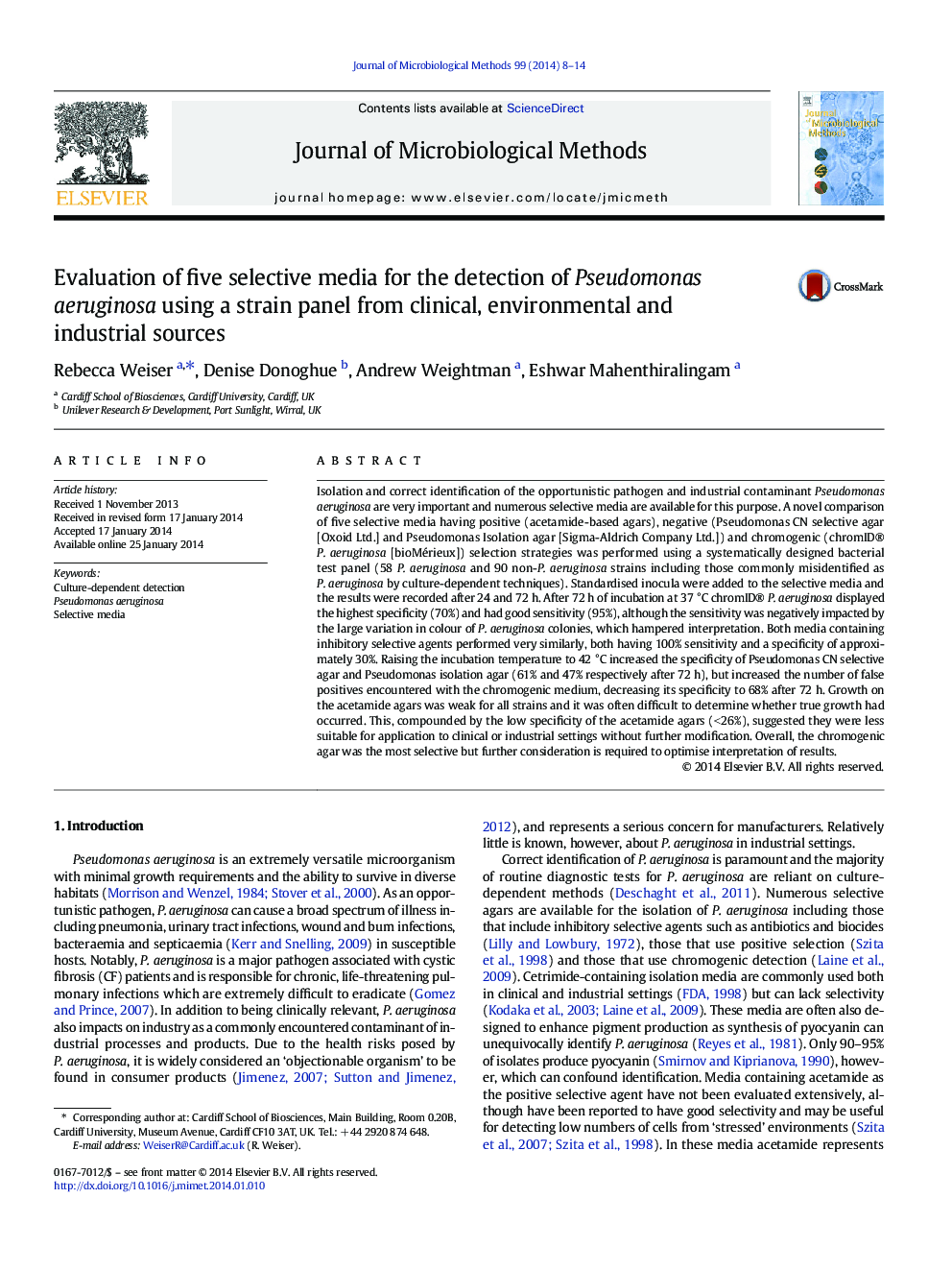| کد مقاله | کد نشریه | سال انتشار | مقاله انگلیسی | نسخه تمام متن |
|---|---|---|---|---|
| 2090003 | 1545944 | 2014 | 7 صفحه PDF | دانلود رایگان |
• Five selective media were evaluated for the detection of Pseudomonas aeruginosa.
• chromID® P. aeruginosa demonstrated the highest specificity and good sensitivity.
• Certain Pseudomonas and Burkholderia strains also grew on chromID® P. aeruginosa.
• Media containing inhibitory agents had high sensitivity but lower selectivity.
• Positive selective media containing acetamide were difficult to interpret.
Isolation and correct identification of the opportunistic pathogen and industrial contaminant Pseudomonas aeruginosa are very important and numerous selective media are available for this purpose. A novel comparison of five selective media having positive (acetamide-based agars), negative (Pseudomonas CN selective agar [Oxoid Ltd.] and Pseudomonas Isolation agar [Sigma-Aldrich Company Ltd.]) and chromogenic (chromID® P. aeruginosa [bioMérieux]) selection strategies was performed using a systematically designed bacterial test panel (58 P. aeruginosa and 90 non-P. aeruginosa strains including those commonly misidentified as P. aeruginosa by culture-dependent techniques). Standardised inocula were added to the selective media and the results were recorded after 24 and 72 h. After 72 h of incubation at 37 °C chromID® P. aeruginosa displayed the highest specificity (70%) and had good sensitivity (95%), although the sensitivity was negatively impacted by the large variation in colour of P. aeruginosa colonies, which hampered interpretation. Both media containing inhibitory selective agents performed very similarly, both having 100% sensitivity and a specificity of approximately 30%. Raising the incubation temperature to 42 °C increased the specificity of Pseudomonas CN selective agar and Pseudomonas isolation agar (61% and 47% respectively after 72 h), but increased the number of false positives encountered with the chromogenic medium, decreasing its specificity to 68% after 72 h. Growth on the acetamide agars was weak for all strains and it was often difficult to determine whether true growth had occurred. This, compounded by the low specificity of the acetamide agars (< 26%), suggested they were less suitable for application to clinical or industrial settings without further modification. Overall, the chromogenic agar was the most selective but further consideration is required to optimise interpretation of results.
Journal: Journal of Microbiological Methods - Volume 99, April 2014, Pages 8–14
